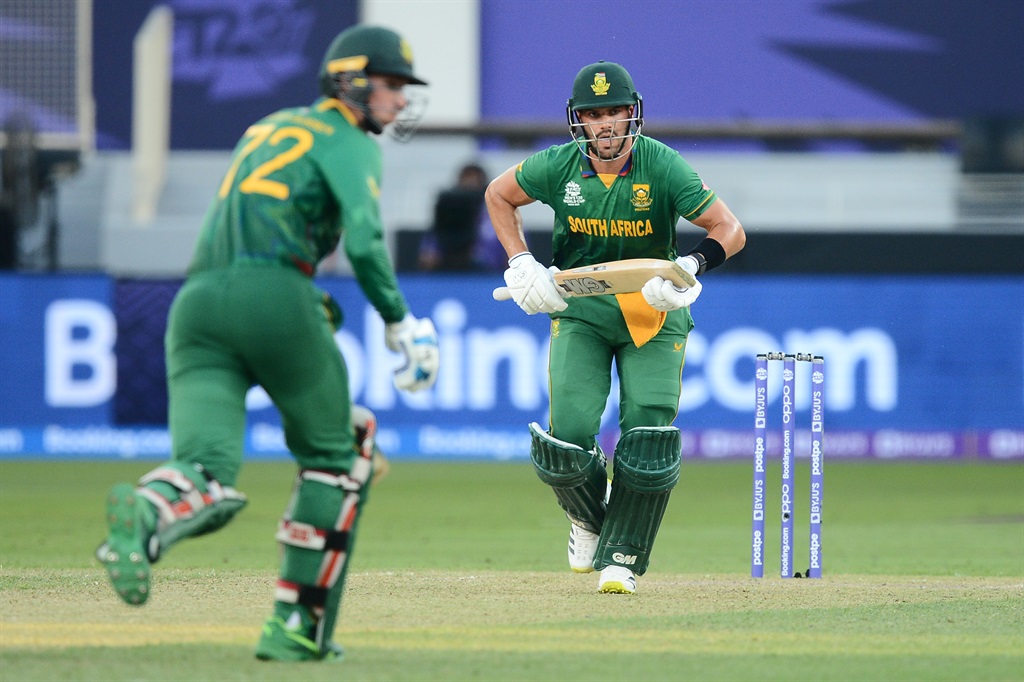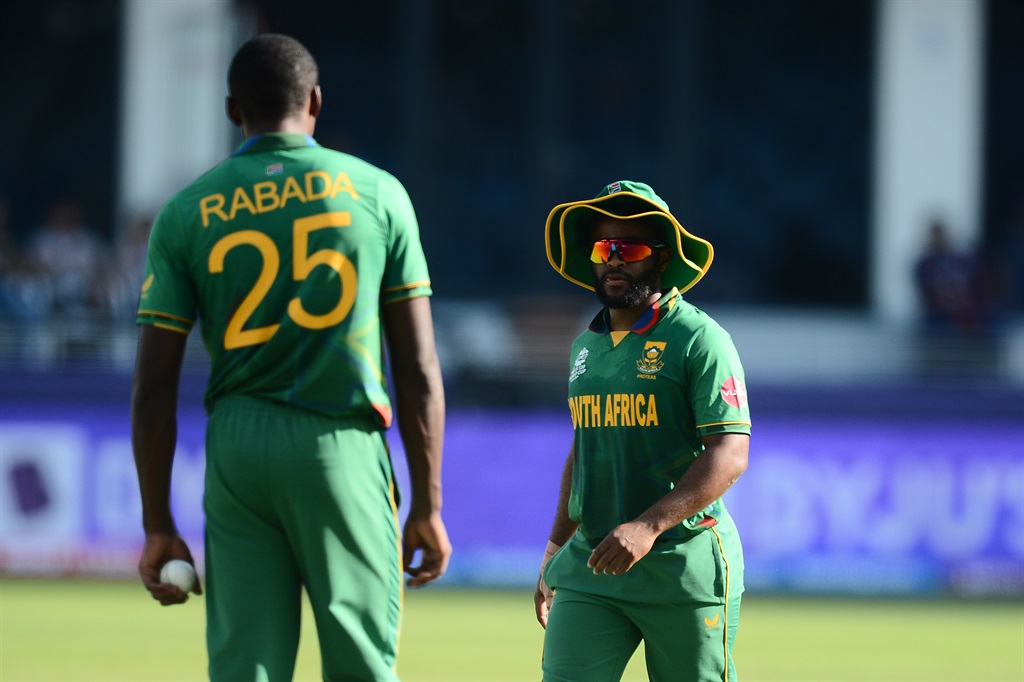
Whether it will be enough to even put them in the semi-finals of the ICC T20 World Cup, the Proteas' best chance of sneaking in is to simply achieve the improbable - beat England in Sharjah on Saturday.
South Africa will have a clear idea of what they need to do - assuming it's still possible - which is either a gift or a curse and, tellingly, might need to shed their habit of just relying on one or two incisive performances to carry them.
But that's not the only factor.
Sport24 identifies five things the Proteas need to get right.
Bat first
It's likely that the Proteas will be asked to do so anyway if England win the toss, but even if Temba Bavuma calls correctly he should choose to take first strike.
Granted, this is a conservative tactic that puts the South African bowlers at risk of having to deal with dew though it hasn't been as big a problem as initially feared.
Sharjah's weather forecast also looks encouraging in that regard.
Batting first is a way of mitigating the risk of the Proteas' wobbly batting order, which hasn't suggested to date that it's capable of chasing a 160+ score, and allows them to be more measured in building a solid total.
It's tempting to argue that more than 180 will be required to put the vaunted English batters under pressure, but scoreboard pressure can be a funny thing.
If the Proteas can harvest a solid 155 or 160, their in-form bowling attack should be backed to defend it.
Get the balance right
Related to South Africa's batting is the question of whether they can afford to have Bavuma, Reeza Hendricks, Rassie van der Dussen and to a lesser extent, Aiden Markram, in one order.
Markram has established himself as one of the more consistently forceful exponents of that group yet there is a suspicion that the four men are perhaps a bit too similar in nature - stroke-makers instead of hitters.
OPINION | Net run rate will (probably) knock the Proteas out, but there's beauty in it
Admittedly, the overall Proteas squad lacks power hitters in general though it might be useful to deliberate on whether Hendricks, the least established player of that group, needs to make way for a more robust batter in Heinrich Klaasen or Wiaan Mulder, who also provides an extra seamer option.
Either that or someone will have to go against his nature and go out swinging.
Quinny can't bend the knee
This is, obviously, a metaphorical thought.
The enigmatic left-hander has had plenty to deal with off the field in this tournament and it's translated into three low scores to date.
De Kock is undeniably one of the few real superstars in South Africa's group of grafters, a sizzling batter with the ability to take the game away from the English attack in an instant.
READ | Educated TV truths from Eric Simons
In fact, if there's one guy that can match England's band of stroke-makers, it's him.
The Proteas need him to set the tone, he can't kneel down to an opposition attack again.
Attack must stay ruthless
The Proteas' bowling is the jewel in their crown.
It's been a pleasure to witness an attack featuring two prime speedsters and a lethal wrist-spinner dovetail with an underrated, wily left-arm finger tweaker and seamer.
Sri Lanka showed previously that the England batting can be put under pressure early - reducing them to 47/3 - before taking the foot off the pedal to allow them to recover to 163.
The Proteas have made it a habit to take wickets in the power-play, but they need to keep the pressure on due to their opponents batting so deep.
At least the straightforward win over Bangladesh showcased in abundance that they can do just that.
Get the calculators right
If the Windies do the Proteas a favour against the Aussies, net run rate will become a defining factor.
Employ a temporary mathematician or ask a commentator or just keep an eye on the telly.
There's no need for a repeat of the trauma of 2003 when wrong sheets of paper were read...





















